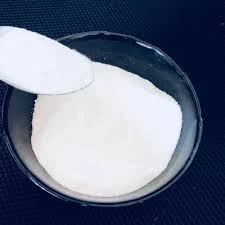
Dez . 05, 2024 19:02 Back to list
Investigation of HPMC Gelation Temperature Characteristics and Influencing Factors
Understanding HPMC Gelation Temperature A Key Factor in Formulation Science
Hydroxypropyl methylcellulose (HPMC) is a widely used polymer in pharmaceutical, cosmetic, and food industries due to its remarkable properties such as thickening, emulsifying, and stabilizing. One of the critical parameters concerning the application of HPMC in various formulations is its gelation temperature. Gelation temperature refers to the temperature at which a liquid form of a polymer transitions into a gel-like state, significantly influencing its physical properties and applicability.
The Importance of Gelation Temperature
The gelation temperature of HPMC is pivotal in predicting its behavior in different environments. This property is essential when formulating products like hydrogels, controlled-release drug formulations, or even coatings. Knowledge of the gelation temperature allows formulators to design products with enhanced stability, optimal release rates, and improved patient compliance.
In pharmaceutical applications, for instance, HPMC is often used to create sustained-release formulations. Understanding the gelation temperature enables researchers to tailor the release profile of active ingredients. A polymer that gels at body temperature will create a sustained release of medication, making it suitable for oral and topical drug delivery systems.
Factors Influencing Gelation Temperature
Several factors affect the gelation temperature of HPMC, including the degree of substitution, concentration of the polymer, pH of the solution, and the presence of salts or other additives. The degree of substitution refers to the proportion of hydroxyl groups that are replaced by hydroxypropyl and methoxy groups in the cellulose backbone. Higher substitution levels generally lower the gelation temperature, making it easier for the polymer to transition into a gel state.
Concentration is another vital factor; as the concentration of HPMC increases, the gelation temperature tends to rise, resulting in stronger gels. It is crucial for formulators to find an optimal concentration to achieve the desired viscosity and gel characteristics. Similarly, pH levels can significantly affect the solubility and gelation behavior of HPMC. An understanding of how different pH conditions alter the gelation temperature allows for more precise control over the final product’s properties.
hpmc gelation temperature

Applications of HPMC Gelation
The unique gelation properties of HPMC have led to its widespread use across multiple industries. In the food industry, HPMC serves as a stabilizer and thickening agent, improving texture and mouthfeel in products such as sauces and dairy items. The gelation behavior can also help in preserving the product's structure during processing and storage.
In cosmetics, HPMC is utilized in formulations for lotions, creams, and gels, where the gelation temperature plays a crucial role in the product's feel and efficacy. The ability to form a gel at skin temperature can create a desirable sensation while enhancing the delivery of active ingredients.
In biotechnology and pharmaceuticals, researchers leverage the gelling properties of HPMC for the development of drug delivery systems. The ability to fine-tune the gelation temperature allows for the creation of personalized medicine solutions, where the release of medication can be precisely controlled and adapted to meet individual patient needs.
Conclusion
Understanding the gelation temperature of HPMC is a fundamental aspect of polymer science and formulation development. It is a key parameter that influences the formulation process and the final characteristics of products across various industries. By mastering the factors that affect gelation temperature, researchers and formulators can create innovative and effective products that meet consumer demands.
As research continues to evolve, exploring the intricacies of HPMC gelation will undoubtedly lead to advancements in formulation technologies, offering new solutions in medicine, food sciences, and cosmetics. Harnessing the potential of HPMC and its gelation properties holds promise for the future of product development across many fields, enhancing both performance and user experience. With ongoing studies and innovations, the knowledge surrounding HPMC will only grow, further enriching the formulation landscape and its applications.
-
Unlocking the Benefits of HPMC Products: A Gateway to Versatile Applications
NewsAug.07,2025
-
Unleashing the Potential of HPMC Ashland: A Comprehensive Look
NewsAug.07,2025
-
Tile Bonding Cellulose: The Key to Superior Adhesion and Durability
NewsAug.07,2025
-
Hydroxypropyl Methylcellulose Powder: The Versatile Component in Modern Pharmaceuticals
NewsAug.07,2025
-
Hydroxyethyl Cellulose: The Versatile Solution for Various Industries
NewsAug.07,2025
-
Hydroxyethyl Cellulose (HEC): The Versatile Polymer for Various Applications
NewsAug.07,2025







